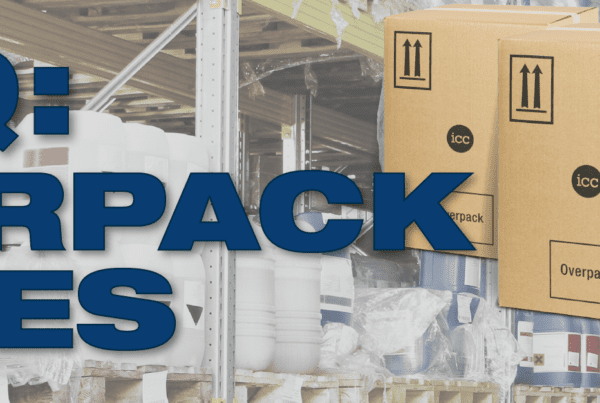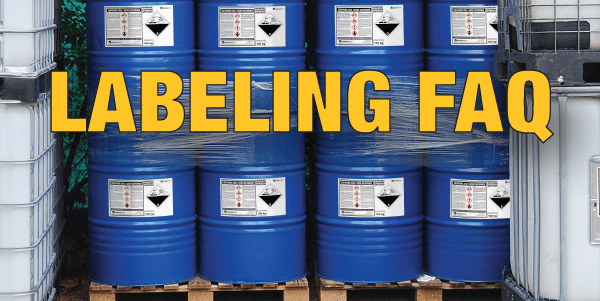Frequently asked questions about Safety Data Sheet
What is a Safety Data Sheet?
A Safety Data Sheet (SDS), is a standardized document that provides information about the properties of chemicals, substances, or mixtures, as well as the potential hazards associated with their use, storage, handling, and disposal. SDSs are essential to workplace safety and are typically required by various regulations and safety standards, such as OSHA and WHMIS.
What products require a Safety Data Sheet?
Any product that contains a hazardous chemical needs to have a safety data sheet.
What are the criteria to determine if a chemical is a hazardous substance?
There are health hazards and physical hazards.
Physical hazards include explosive, flammable gases, aerosols, oxidizers, self-reactive/pyrophoric, self-heating, organic peroxides, corrosive to metals, gas under pressure/chemicals under pressure, in contact with water emits a flammable gas.
Health hazards include acute toxicity, skin corrosion/irritation, serious eye damage or irritation, respiratory or skin sensitization, germ cell mutagenicity, reproductive toxicity, specific target organ toxicity, and aspiration hazard.
Does a consumer product need a Safety Data Sheet?
The CCCR (Consumer Chemicals and Contains Regulations, 2001) and CPSC (Consumer Product Safety Act) regulations do not require a safety data sheet, but the industry standard is to produce one.
Who regulates Safety Data Sheets in the USA?
The Occupational Safety and Health Administration (OSHA) regulates Safety Data Sheets.
Who regulated Safety Data Sheets in Canada?
The structure in Canada is slightly different. Health Canada is responsible at a federal level, but each province has its legislation that can vary slightly.
In what regulation can you find information on Safety Data Sheets in the USA?
The Hazard Communication Standard (HCS) (29 CFR 1910.1200). OSHA requires that SDS preparers provide specific minimum information as detailed in Appendix D of 29 CFR 1910.1200.
What regulations can you find on safety data sheets in Canada?
At a Federal level, the WHMIS regulations are found in the Hazardous Products Act and the Hazardous Products Regulations.
Provincial regulations:
http://www.qp.gov.sk.ca/DOCUMENTS/ENGLISH/STATUTES/STATUTES/S15-1.PDF
http://www.qp.gov.sk.ca/documents/English/Regulations/Regulations/S15-1R6.pdf
https://www.canlii.org/en/nu/laws/regu/nu-reg-003-2016/latest/part-1/nu-reg-003-2016-part-1.pdf
http://legisquebec.gouv.qc.ca/en/ShowDoc/cr/S-2.1,%20r.%208.1
http://novascotia.ca/lae/healthandsafety/pubs.asp#ohsa
http://www.assembly.nl.ca/legislation/sr/statutes/o03.htm
http://laws.gnb.ca/en/showdoc/cs/O-0.2
https://legislation.yukon.ca/acts/ochesa_c.pdf
http://www.ontario.ca/laws/statute/90o01
https://www.princeedwardisland.ca/en/legislation/occupational-health-and-safety-act
https://www.justice.gov.nt.ca/en/files/legislation/safety/safety.r8.pdf?t1446244135517
http://web2.gov.mb.ca/laws/statutes/ccsm/w210e.php
A complete list can be found at www.whmis.org under the legislation tab.
Do I have to disclose my formulation on an SDS?
Only hazards ingredients need to be disclosed on the SDS. Additionally, substances with exposure limits should be disclosed as well. Non-hazardous may be omitted.
How can I protect my formulation?
It depends on the country you are creating the SDS for. In Canada, you must disclose the ingredient, but you can use a range for the concentration. If you want to protect all or part of the formula fully, you have to apply the HMIRA (https://www.canada.ca/en/health-canada/services/environmental-workplace-health/occupational-health-safety/workplace-hazardous-materials-information-system/exemptions-confidential-business-information.html)
What are the allowable WHMIS ranges?
- 1-1.0%
- 5-1.5%
- 0-5.0%
- 0-7.0%
- 0-10.0%
- 0-13.0%
- 0-30.0%
- 0-40.0%
- 0-60.0%
- 0-70.0%
- 0-80.0%
- 0-85.0%
- 0-100.0%
How can I protect my formulation in the USA?
Where a trade secret is claimed in accordance with § 1910.1200(i), a statement that the specific chemical identity and/or exact percentage (concentration) of composition has been withheld as a trade secret is required in Section 3 of the SDS. See 1910.1200(i)(1)(iii). No prior approval is required.
How often do I have to update my SDS?
Best industry practice is to update your SDS every 3-years. There are several provinces in Canada that still require mandatory 3-year update. These include British Columbia, Yukon, Northwest Territories, Nunavut, Newfoundland and Labrador and Saskatchewan.
Who is responsible for the SDS?
The responsibility for SDS compliance lies with chemical manufacturers/chemical suppliers, as well as importers/distributors of the hazardous chemical.
Can I write my own SDS?
Writing a safety data sheet is a complex undertaking. You must research the ingredients, then come up with a classification. There is a lot of professional judgement that often goes into the process. It is highly recommended that you hire a professional to do it correctly.





